Species throughout the animal kingdom feature vital interfaces between the outermost layers of their bodies and the environment….
New brain-like transistor mimics human intelligence – Technology Org
Taking inspiration from the human brain, researchers have developed a new synaptic transistor capable of higher-level thinking. Designed…
Hubble Sights a Galaxy with ‘Forbidden’ Light – Technology Org
This whirling image features a bright spiral galaxy known as MCG-01-24-014, which is located about 275 million light-years from Earth. In…
The Friday Roundup – Voice Over EQ and Text Effects
How to EQ Voice Properly One of the most difficult things in video editing to master is not actually the video stuff itself. The place most people struggle is with audio and especially speaking voices. Obviously it is better to record voices in a place that…
The Trials And Tribulations Of An Acquisition: A Look At Microsoft’s Journey To Purchase Activision Blizzard
Introduction
Xbox’s first-party studio lineup in 2017 consisted of five studios and a publishing arm: Rare, Turn 10, 343 Industries, The Coalition, Mojang Studios, and Xbox Game Studios Publishing. Today, six years later, Microsoft owns more than 50 studios, thanks to various acquisitions over the years.
Microsoft announced in January of 2022 that it was acquiring Call of Duty and Diablo maker Activision Blizzard for a colossal $68.7 billion, the largest video game acquisition ever. After nearly two years of Stateside court cases with the federal government, appeals and appeasements across the pond, unprecedented document leaks, direct arguments from rivals like PlayStation, and more, the deal is complete: Xbox is home to all 19 of Activision Blizzard’s studios (and King’s 11 mobile game development studios as well, since Activision Blizzard purchased the company in 2016).
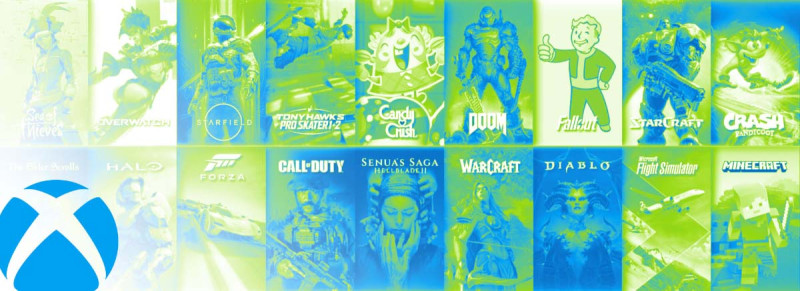
Grand Ambition
Grand Ambition
Following the official announcement of the acquisition, lawyers and analysts were quick to bring up the U.S. Federal Trade Commission lawsuit against Microsoft in 1999, in which the regulatory agency argued that Microsoft was monopolizing the PC home market with its proprietary software and technology restrictions. Microsoft lost that case, with a judge ruling it violated the Sherman Antitrust Act. But an appeals court overturned it, and Microsoft and the FTC settled, which Lee Law founding partner Michael Lee says is typical.
“Ninety-nine percent of all these things get resolved by a settlement, but I think once you have a history of anti-competitive behavior – I don’t think it’s vengeance – but I definitely think there is more scrutiny placed on companies that did it once that might want to control the market in other areas,” Lee, otherwise known as GeekAttorney online, tells me.
Roughly two and a half months after the initial acquisition announcement, four U.S. senators wrote a letter to the FTC asking them to challenge the acquisition, citing general tech consolidation concerns and how this acquisition might allow Activision Blizzard to sweep under the rug a litany of accusations including discrimination, sexual misconduct, and more. Lee says this wasn’t surprising, nor out of turn for senators, noting, however, that the FTC is independent of the U.S. Senate.
The FTC announced last December it is suing Microsoft over anti-trust practices and monopolization concerns.
“The [FTC] is seeking to block technology giant Microsoft Corp. from acquiring leading video game developer Activision Blizzard, Inc. and its blockbuster gaming franchises such as Call of Duty, alleging that the $69 billion deal, Microsoft’s largest ever and the biggest ever in the video gaming industry, would enable Microsoft to suppress competitors to its Xbox gaming consoles and its rapidly growing subscription content and cloud-gaming business,” the FTC wrote in its announcement.
While that December 2022 lawsuit was set for the FTC’s in-house court, the agency also filed a separate case in a California court in an attempt to achieve preliminary injunction because “Microsoft and Activision have represented that they may consummate” the deal, according to court filings.
Lee says preliminary injunctions, when granted, pause a company’s plans or actions. These injunctions are requested when whatever is on hand presents an immediate threat or harm. If a company were sending out a product that harmed people, someone suing would likely request a preliminary injunction so that the courts could quickly tell the company to stop sending out the harmful product until the lawsuit is complete. As for why, Lee says court cases take months, years sometimes – if harm or threat is involved, waiting a year is not in the interest of those worried about the potential for damage.
A Messy Day in Court
A Messy Day in Court
As a result of the FTC’s lawsuit, various bigwigs, from Microsoft CEO Satya Nadella to Microsoft Gaming CEO Phil Spencer and Xbox corporate vice president Sarah Bond, testified in court. Across days of testimony, we learned a lot.
Bond claimed Activision demanded a larger revenue share to put Call of Duty on Xbox leading up to the series’ 2020 release. Bethesda’s now-former head of publishing, Pete Hines, revealed that Wolfenstein developer Machine Games’ Indiana Jones will skip PlayStation 5. In a prerecorded deposition from PlayStation CEO Jim Ryan, who recently announced he’s leaving the company, he said Xbox Game Pass is “value destructive” to publishers. Ryan and PlayStation were among the most vocal opponents of the acquisition, for obvious reasons, during court proceedings.
And that’s just a tiny chunk of what we learned during this court case. California judge Jacqueline Scott Corley denied the FTC’s request for a preliminary injunction on July 11, and the agency quickly appealed. The Ninth Circuit Court of Appeals denied it.
These court cases later bit Microsoft in the butt, even if it achieved the desired outcome. Months after the court cases, in September of this year, more than 250 private documents leaked, including emails between top Xbox executives, after a clerical mistake by someone at Microsoft. From these leaks, we learned Xbox is planning its next-gen hybrid cloud console for 2028, that Bethesda might be planning to remaster Fallout 3 and The Elder Scrolls IV: Oblivion, that the Xbox Series X might be getting a refresh with a new controller in 2024, and that at one point, Spencer considered acquiring Nintendo and Warner Bros. Games. Microsoft corrected course, but the damage was done.
“It is hard to see our team’s work shared in this way because so much has changed and there’s so much to be excited about right now, and in the future,” Spencer shared on X, formerly Twitter, after the leaks. “We will share the real plans when we are ready.”
Concerns From Across the Pond
Concerns From Across the Pond
With the appeal denied, Microsoft was clear to close in the States. Across the Atlantic Ocean, the U.K.’s Competition and Markets Authority prevented Microsoft from closing the deal with the U.K. market intact. The CMA announced its investigation into the acquisition on July 6, 2022.
“Would I say these organizations affect each other? I don’t see how they can’t,” Lee tells me when asked if the CMA’s decision to get involved might have been influenced by the FTC’s concerns. “If all these other agencies around the world are looking into some anti-competitive behavior, it would only be natural for [the CMA] to look at it. Do they have conversations on the record? Probably not, but off the record […] discussions happen.”
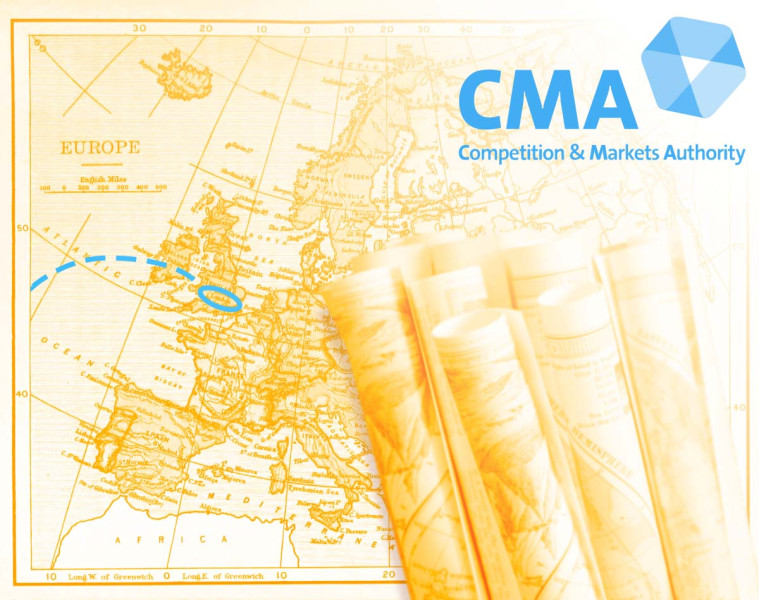
Lee says Microsoft could have technically closed the deal without the CMA’s greenlight, but it would have had to carve Activision Blizzard games out of its U.K. market proceedings; you don’t spend $69 billion to remove a market from your new purchase’s potential. Set to appear in court on July 28 of this year to appeal the CMA’s initial April 2023 block, Microsoft instead paused its appeal on July 11 to negotiate with the agency.
That led to a new deal, submitted on August 22, that proposed Ubisoft get the rights to Activision Blizzard game streaming for 15 years in the U.K. market. A month later, the CMA granted Microsoft preliminary approval. On October 13, the CMA approved Microsoft’s acquisition of Activision Blizzard. But it was clear the CMA was less than thrilled with how Microsoft handled itself during the process.
“[Businesses] and advisors should be in no doubt that the tactics employed by Microsoft are no way to engage with the CMA. Microsoft had the chance to restructure during our initial investigation but instead continued to insist on a package of measures that we told them simply wouldn’t work,” CMA chief executive Sarah Cardell wrote in the agency’s approval. “Dragging out proceedings in this way only wastes time and money.”
Closing the Deal
Closing the Deal
Hours after the CMA’s October 13 approval, Microsoft announced it had officially acquired Activision Blizzard.
It did so with the corporate pomp and circumstance you’d expect: an “Activision Blizzard King Joins Xbox Official Trailer” with a tone that’d have you thinking Microsoft just saved the world, a promise to deliver new worlds and stories, and Spencer’s often repeated sentiment of bringing more games to more players in more places. Controversial Activision Blizzard CEO Bobby Kotick revealed he was staying with the company through 2023, at the request of Spencer, to help with the transition, before a multi-million-dollar golden parachute likely sends him on his way in 2024. The official Activision Blizzard Twitter account said the company will begin adding its games to Game Pass “sometime in the course of the next year.”
October 13 was a big win for Xbox and its community and an even bigger win for Microsoft. After nearly two years of hurdles, court cases, document leaks, and more, it had finally completed the acquisition.

“We thought it would go through,” Lee says when I ask if he and his law peers expected the deal to pass. “We’ve seen bigger mergers go through [outside of games]. It just needed to overcome the hurdles to make everyone happy.”
As for what’s next, Lee expects Microsoft to cool down on multi-billion-dollar acquisitions.
“When there’s smoke, there’s fire,” Lee says. “If they went ahead and tried to do any multi-billion mergers, people would look into it further and say, ‘We were right.’ But this is their model. [Acquisitions] like this occur maybe once a decade […], so I do think there will be a cooldown but not a slowdown of their initial business plan which says, ‘If there’s another company doing it right and doing it better than we can, let’s acquire them and bring their knowledge in house.’
“But maybe instead of Microsoft purchasing it, it’s Blizzard purchasing it now.”
This article originally appeared in Issue 361 of Game Informer
Ukraine Received 13 Special Armoured Ambulances: What Are These Vehicles? – Technology Org
Medical evacuation vehicles are crucial in an armed conflict. They need to be quick and powerful, very capable…
First Electric Car from Xiaomi: On the Road to Becoming Top Car Producer? – Technology Org
Chinese Xiaomi is widely known as a smartphone manufacturer. It also makes a lot of other gadgets and…
Ukraine Found a Way to Get More of 155 mm Shells That It Needs – Technology Org
Ukraine is experiencing a shortage of artillery ammunition. This is a huge problem, because infantry cannot effectively push…
JVC Announces Auto-Tracking for KY-PZ510 Series PTZ Cameras – Videoguys
JVC Pro is very pleased to announce the new Version 3.0 – Auto Tracking Firmware (free of charge) for their 510 series of PTZ Cameras!
The new 3.0 firmware provides “5” New Auto Tracking Features to help raise the quality of your production: STANDARD, AREA, STAGE, WIDE AREA, and FINE ADJUSTMENT. This combined with the superb video performance, flexibility, and wide-angle power of the KY-PZ510 makes the 510 series a very powerful solution for your PTZ needs. Attached, please find the JVC Pro – New Product News & Reference Guide that provides more comprehensive info on the KYPZ510 V3 Firmware and all the Auto-Tracking benefits.
The Version 3.0 – Auto Tracking Firmware is available free of charge on the new JVC Professional website. https://www.jvc.com/usa/pro/professional-video/
Five New Auto Tracking Settings
1. Standard
In the Standard auto-tracking mode, you can set various positions of the subject within the frame.

2. Area
The camera captures the Area frame where the target subject is visible. When the subject moves to an adjacent Area, the camera pans to the new Area. Two to four Area settings can be made. Subject tracking is stationary in this setting

3. Stage
In the Stage setting, the left and right panning borders are set. The subject will be auto-tracked only within the borders.
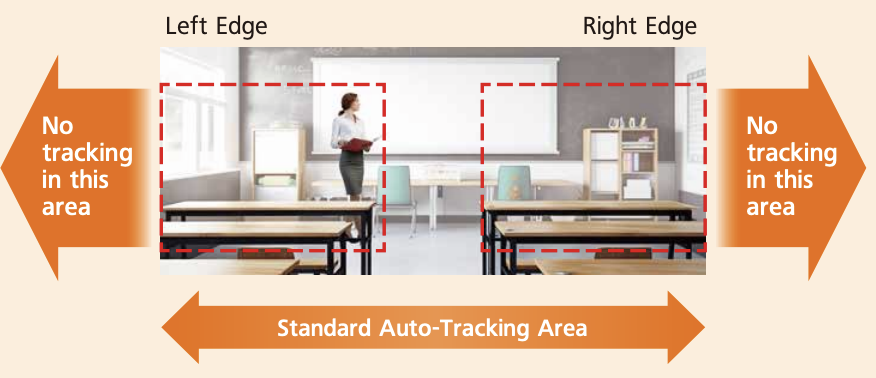
4. Wide Area
In the Wide Area setting, a left and a right Area with borders are set with the camera stationary and no subject tracking. Standard auto-tracking of the target subject will be engaged outside of the set Area.
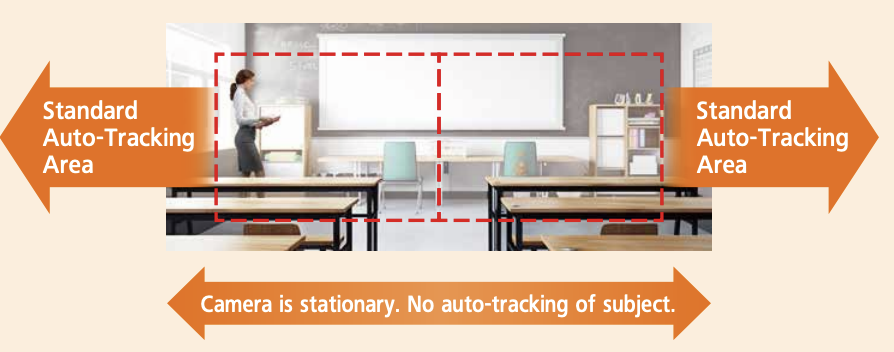
5. Fine Adjustment
If the subject is out of the preset framing position after panning, the camera will adjust the subject framing to the correct position. Once the subject framing is corrected, the camera will become stationary

Mastering the dynamic SaaS ecosystem and staying ahead in 2024 – CyberTalk
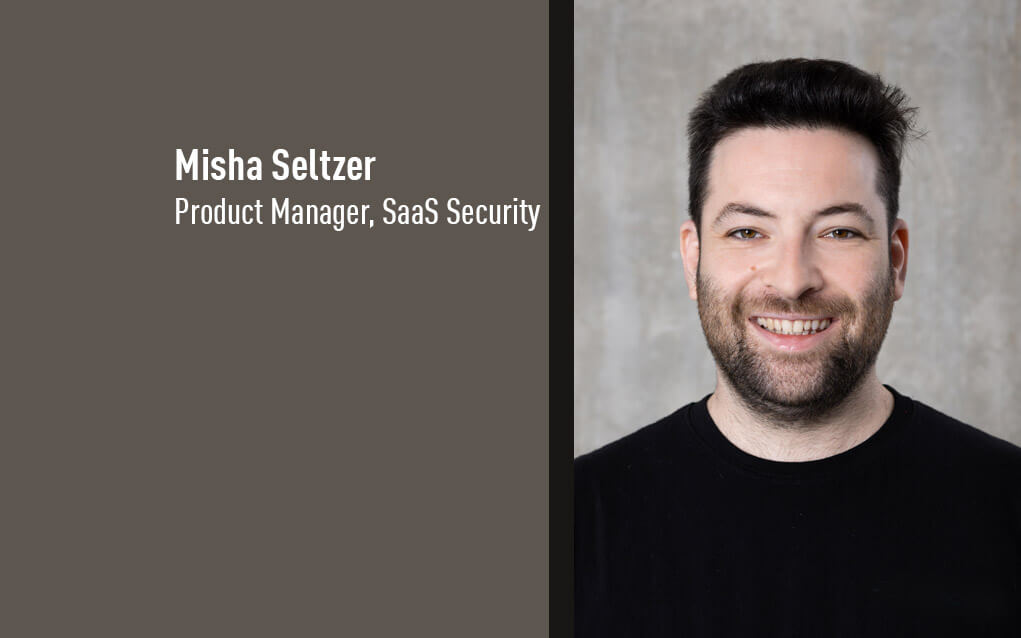
I’m the co-founder and CTO of Atmosec, which is now under the Check Point umbrella. I’m driven by helping companies confidently secure the adoption, usage and management of any business application across their organization.
In this interview, gain valuable insights from SaaS security expert Misha Seltzer as he explores the dynamic landscape of today’s SaaS ecosystem. Uncover best practices, cutting-edge vendor innovations and clever solutions that can help you overcome challenges and empower your business to confidently pursue new opportunities in 2024. Don’t miss this!
What are you currently seeing in terms of how the SaaS ecosystem is evolving? Are there any new risks that you’d like to speak to?
a. The main shift that we’re seeing is the move from using a small number of larger SaaS services, to a large number of smaller, more dedicated, services (in addition to the large ones). If in the past, you’d expect just a couple of SaaS services per department (GitHub for Dev, Salesforce for Sales, HubSpot for Marketing), you now find tens, if not hundreds, of smaller dedicated services per department, with many overlapping services.
For example, in a single marketing department, and for email marketing alone, you may find HubSpot as the main platform, with ZoomInfo for email targeting, Mailchimp for email sending, Yesware for email tracking, CopyAI for generating email content, and Marketo for automation and coordination between them.
b. We see two main trends in the way companies are dealing with the above change: Some companies embrace the change and are scrambling to do whatever possible to secure it, while others try to disallow any SaaS service that is not on a predefined allow-list. The problem with the second approach is that many of the newer SaaS services are very cheap to use, if not free-to-start, and employees just start using them without asking for permission.
c. The primary new risk with the above is that it’s no longer enough to secure the main SaaS services that are used in an organization. A more comprehensive security solution is necessary to overlook the plurality of the smaller SaaS services that usually have smaller security budgets, worse security practices, but still have access to sensitive organizational data.
d. This new risk, is in a sense a SaaS supply chain risk, and we already see it being abused by malicious actors, as in the case of the (already not so) recent attack disclosed by GitHub, which targeted Heroku and TravisCI (link)
What are the corresponding implications for security? Can you share insights that could assist C-level security leaders?
a. It’s very clear to most security leaders that SaaS security is something that can’t be ignored anymore. With that said, most practices revolve around securing the main SaaS services of the organization. While this is very important indeed, securing the main entrance while leaving the back door open is not enough. To secure SaaS, companies must secure the whole ecosystem (the whole house) rather than just the main services and user access (the front door).
b. I think that if I had to choose one insight to suggest to security leaders, it would be to accept the reality that a lot of SaaS services will be used in the organization, and it’s time to find ways to secure the ecosystem as a whole, rather than trying to limit the number of SaaS services used to the number of services that we can secure right now.
With so many SaaS services and apps out there, how can we expect security teams to keep up with all of them?
There is absolutely no way that a security team, no matter how big and well-funded, will be able to get a full grip on the number of SaaS services that can be used in an organization. And even if such coverage can be attained, it will not hold, as services change all the time (new services appear, old one get tossed). Furthermore, we can’t even expect experts of SaaS security providers to have this ability. As such, the solution must be a technological one. It just happens to be that we live in the golden era of Machine Learning and AI, and we can utilize those tools to better understand the different SaaS services that are used and their behaviors.
Where are cyber security companies, like Check Point, innovating when it comes to SaaS risk management?
It seems like many large cyber security companies have wizened up to the realities of SaaS usage, and the need for their security, in that they’ve started adding dedicated SaaS products. Those large companies, as per usual, have two options in front of them: Either try to implement yesterday’s solutions, or buy a startup that provides tomorrow’s. As we can see, while Palo Alto, and Microsoft have announced their SSPM products, Check Point bought a more comprehensive SaaS security solution, that, apart from configuration, also covers many of the other security holes discussed above.
Another innovation, that we can see from multiple security providers, is that the solution to any security risk (SaaS or otherwise) cannot be fixed in a siloed solution. To secure one’s SaaS, a company must not only look at the SaaS service itself, but also at the users using that service (UEBA), at the users’ hardware (endpoint protection), at the communication between the user and the SaaS (secure gateway), and many other attack vectors. While we see a good effort from other security providers (like Microsoft and Palo Alto Networks) when it comes to integrating their SaaS solution with their CASB solution, I believe Check Point is taking the effort even further by also integrating their SaaS solution with the secure gateway, email protection, cloud protection, endpoint solutions and more.
Would you like to tell us a bit about the company that you co-founded, Atmosec? What drew you into this initiative?
While working for my previous employer, one of my responsibilities was technical partnerships and integrations with other products. In many cases, we’d go to a customer and tell them that, for technical reasons, we needed admin permissions to access their other systems in order for the integration to work. This indeed raised some questions, including “What are you going to do with those permissions,” for which we had a very nicely written document listing all the actions that we would take. The customer, in many cases, would review that document and say “Sure, that sounds reasonable,” in response to which I would always wonder, “Wait, that’s it? You’re not going to validate our claims?” just to realize that in most cases, the customers have no way of validating at all.
That got us wondering – in which other cases, do SaaS services communicate on behalf of users, without the users having any visibility into it. And we’ve uncovered a whole world of SaaS security problems…
In relation to SaaS security, what challenges do you believe that the industry will need to overcome within the next 2-5 years?
I believe that the SaaS sprawl and growth will not stop. Companies that try to slow it down, while being more secure on paper, will fall behind the ones that will allow it, and the latter will ultimately be more productive. As such, this is the time to brace yourselves, and embrace the SaaS sprawl.
In order to make an effective effort to embrace SaaS sprawl, and enter the world in which any employee can safely use whatever SaaS service they require to be productive, a couple of changes will have to be made:
i. A better monitoring and better controls/management of the situation.
ii. A way to empower the users to do the right thing in terms of security.
I believe that most employees wouldn’t want to endanger company’s data, and with the right tools in their hands to understand how to secure their SaaS usage, they’ll be willing to cooperate. We’ve successfully achieved that model with the shift-left approach to DevSec. It’s time to do the same for the rest of the organization.
Is there anything else that you would like to share with the Check Point Cyber Talk audience?
My journey with Atmosec was one of continuous innovation, transforming the way we secure SaaS applications. Today, that passion is reignited as I embark on a new chapter with Check Point. The company’s unparalleled expertise and diverse portfolio opens doors to previously unimaginable possibilities, and I’m eager to share the amazing solutions we’ll develop together. The possibilities for innovation are endless. Get ready for a revolution in SaaS security.
